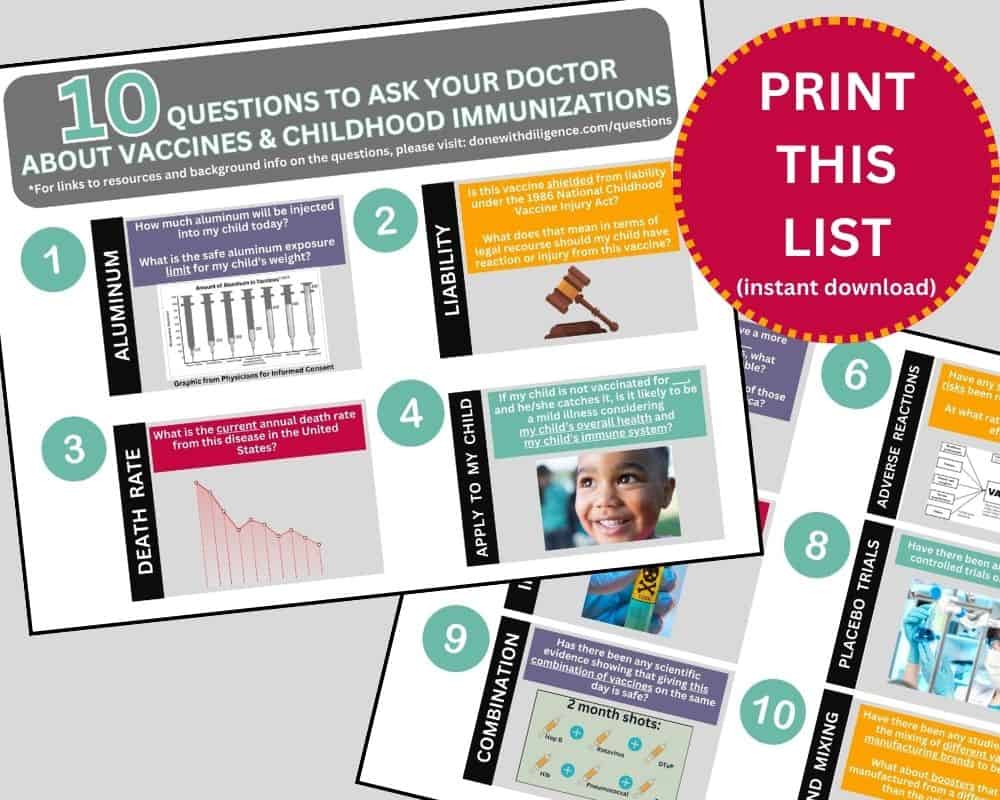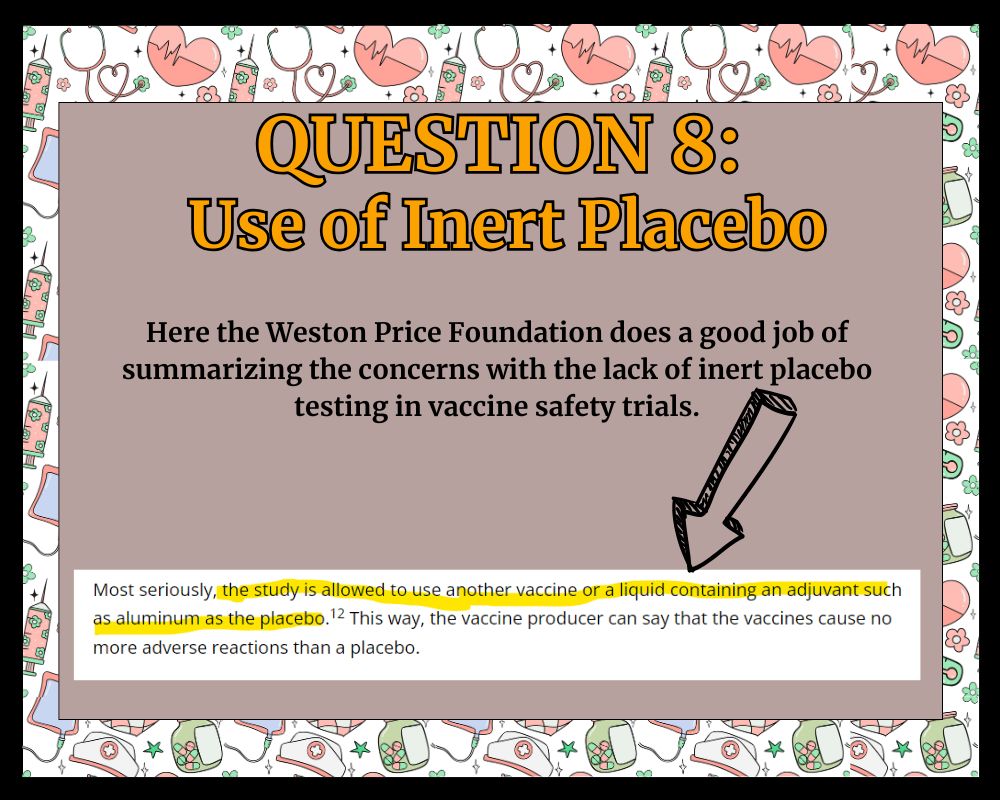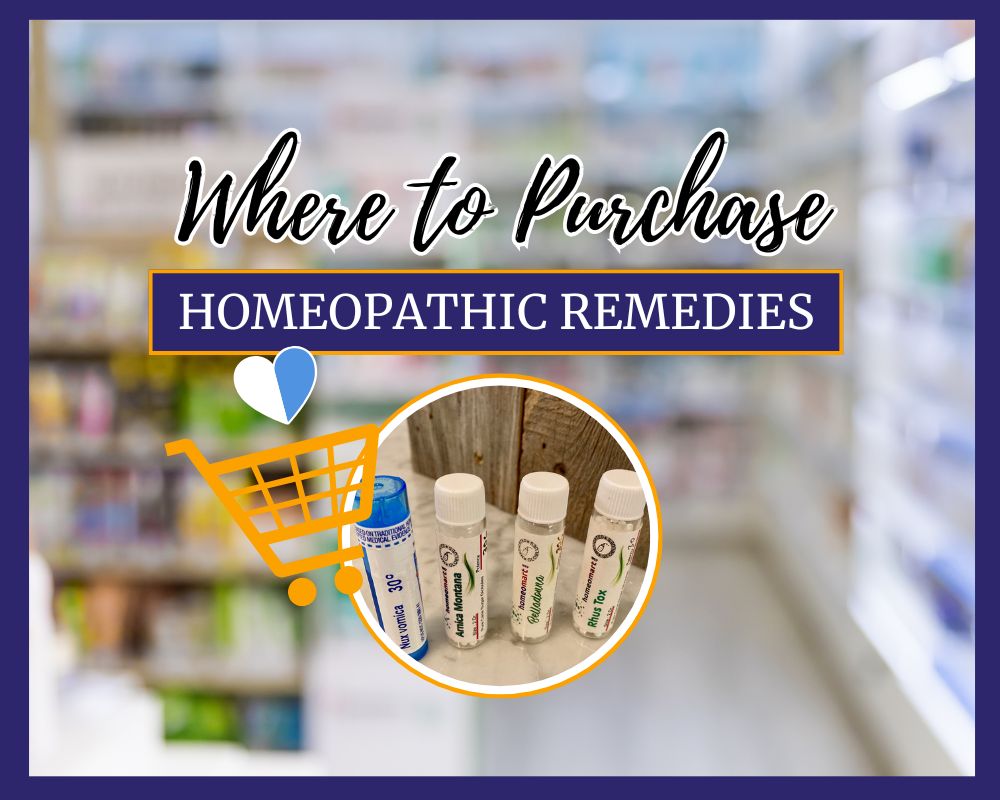Sitting down with your child’s doctor to ask questions about vaccines can be very, very intimidating. But what if you were armed with a list of good questions, and a little background info so you aren’t completely clueless when you start the conversation? Yep, that’s exactly what a Diligent Mama would do! So, let me tell you my top questions I’d have on-the-ready for my appointment.
Print this list to take to your next appointment! Click here
*This article is for information purposes only. This is not medical advice. Please seek medical advice from a professional (or mulitple professionals!) when it makes sense to do so.
10 Questions for Your Child’s Doctor at a Well-Visit Appointment
Before I get into the questions, here are three resources you would want to familiarize yourself with prior to the well visit appointment.
Childhood Immunization Schedule from the CDC
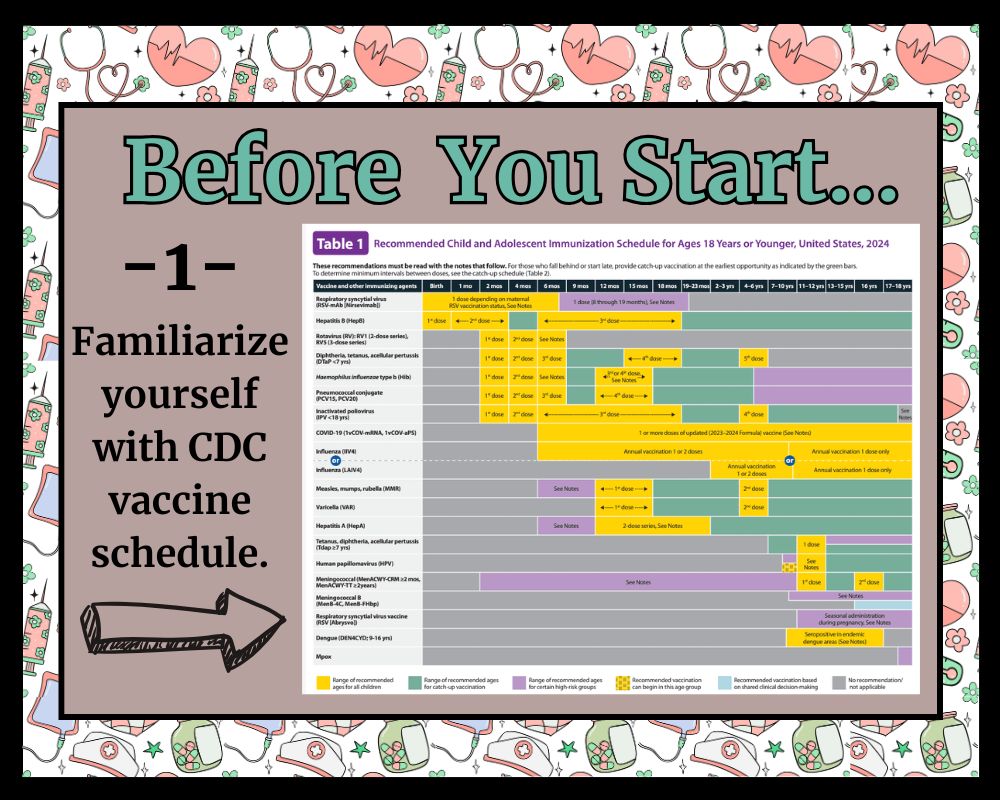
List of Vaccines and Their Ingredients
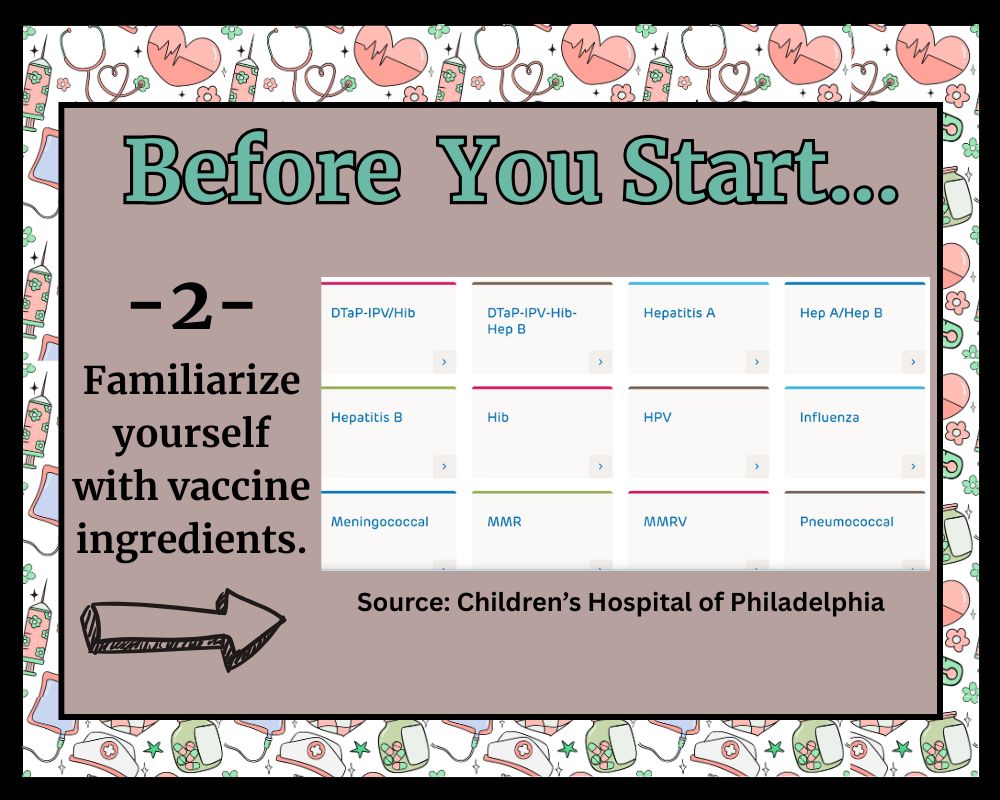
Question 1: If we give all of the scheduled shots today, HOW MUCH ALUMINUM will be injected in to my child? What is the safe aluminum exposure limit for my child’s weight?
Bottom Line: Using our own government’s safety limits for daily aluminum quantities, babies that follow the CDC schedule receive more than a hundred times what is considered safe. And some studies show that that aluminum can penetrate the brain and remain there.
Resources to Educate Yourself about Aluminum:
- Dr. Larry Palevsky (pediatric board certified doctor) testifying at a vaccine safety hearing in Connecticut in February 2020. He talks about the concerns related to aluminum nanoparticles penetrating the brain.

2. Physicians for Informed Consent summary of aluminum handout– Read about why vaccines contain aluminum, safe aluminum limits, and more.


3. Vaccine Conversation Podcast Episodes 75 & 76 – Hear from a pediatrician, Dr. Bob Sears, about the lack of safety research surrounding aluminum and other concerns about the vaccine adjuvant.

Key Points to Remember about Aluminum:
- Aluminum that enters the body through the digestive tract (breastmilk, baby formula, baby food) is different than aluminum that enters the body through injection. The digestive system filters out about 90% of the aluminum before it enters the bloodstream. Not so with injected aluminum.
- Based on the recommendations of the Agency for Toxic Substances and Disease Registry (ATSDR), which is a division of the US government’s Health and Human Services, only 1 microgram per kilogram of body weight per day is safe. The average 2 month old baby weighs around 12 pounds, which is around 5 kilograms. So, only 5 micrograms of aluminum per day would be considered safe.
Published Studies Related to Aluminum Concerns:
- Journal of Immunology Research: https://pubmed.ncbi.nlm.nih.gov/23609067/
- Journal of Current Medical Chemistry: https://pubmed.ncbi.nlm.nih.gov/21568886/
- Journal of Toxicology: https://pubmed.ncbi.nlm.nih.gov/25349607/
Question 2: Is this vaccine SHIELDED FROM LIABILITY under the 1986 National Childhood Vaccine Injury Act? What does that mean in terms of legal recourse should my child have reaction or injury from this vaccine?
Bottom Line: The 1986 National Childhood Vaccine Injury Act shields the manufacturers, doctors, nurses, and clinics from all liability should injury or death occur from any vaccines. This Act was upheld in a 2011 Supreme Court decision called Bruesewitz v. Wyeth. The court used the term “unavoidable unsafe” to describe vaccines, as originated in 1986 Act.
Resources to Educate Yourself about Shielded Liability:
- https://www.congress.gov/bill/99th-congress/house-bill/5546Read the actual legislation here (note Part B on liability): https://www.congress.gov/bill/99th-congress/house-bill/5546

2. ICAN Decide’s Vaccine Safety White Papers: https://icandecide.org/article/an-introduction-to-vaccine-safety/

3. Robert Kennedy Interview with Joe Rogan (start at minute mark 32:42 and listen to about 34:00): https://rumble.com/v2ujfts-joe-rogan-interviews-robert-f.-kennedy-jr.-the-complete-unedited-interview-.html or click on the reel below where I shared that clip.

3. Vaccine Conversation Podcast Episode 67: Listen Here

4. Bruesewitz vs. Wyeth Lawsuit: The U.S. Supreme Court upheld the “unavoidably unsafe” statute in this lawsuit.

Question 3: What is the CURRENT ANNUAL DEATH RATE from these vaccine-preventable diseases in the United States?
Bottom Line: It is important to understand how big of a threat each “vaccine-preventable disease” really is. A lot of them sound very scary, but parents feel much better after they hear the real statistics about permanent injury and death rate. As you look at the risk for each disease, be sure that any statistics/numbers quoted are US only numbers. You need to consider the environment in which your children are being raised, not children in other parts of the world. Also make sure the numbers given are for the current time period (within 5 years). The death rate of serious diseases many decades ago is irrelevant, as many traits of our society have changed.
Resources to Educate Yourself:
- Physicians for Informed Consent: You can find the death rate/ permanent injury rate for each “vaccine-preventable disease”. You’ll be shocked to find out how low the risk is! In this example, before the polio vaccine, normal children had a .0005% chance of serious injury or death from polio! You can use this link to click on the disease you are interested in (Here is the polio vaccine for example).

2. Vaccine Conversation Podcast “The Disease and the Vaccine”- In this series, Dr. Bob Sears talks through current case rates, death rates, and more. For example, here is Episode 11: Pertussis/Whooping Cough. They have similar episodes for all health conditions on the recommended vaccine schedule such as Mumps, Meningococcal, and Measles.
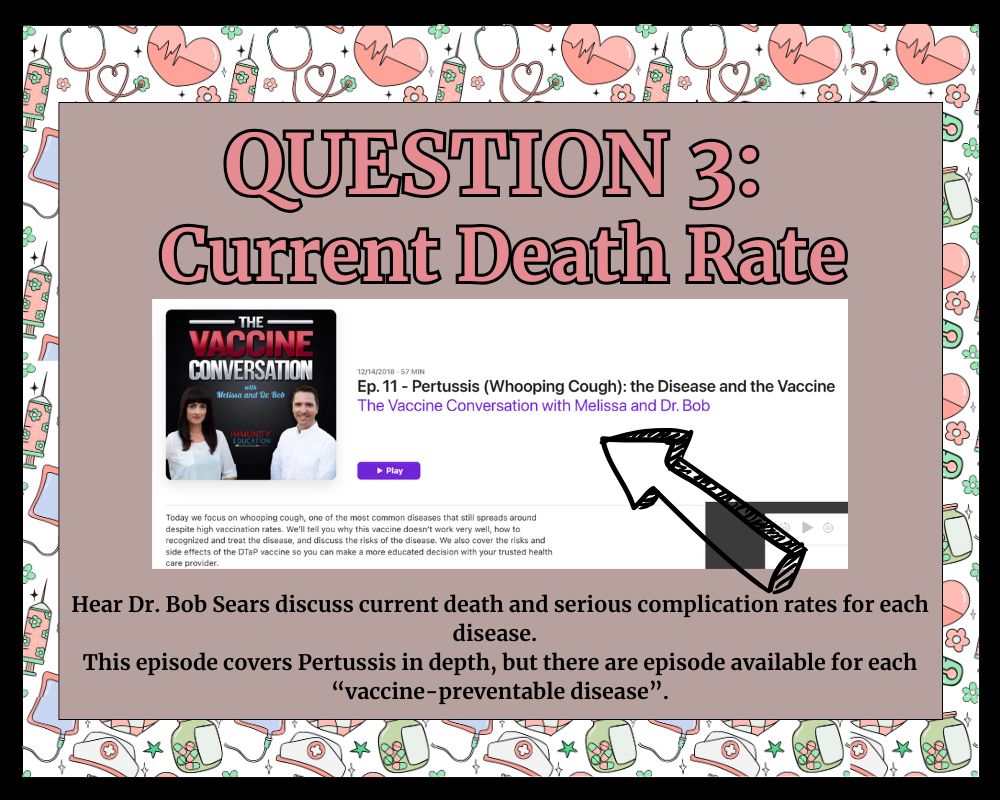
Question 4: If my child is not vaccinated for ___, and he/she catches it, is it likely to be a mild illness CONSIDERING MY CHILD’S OVERALL HEALTH and my child’s immune system?
Bottom Line: Vaccines aren’t one size-fits-all. When making decisions about vaccines for your child, it is important to consider your child’s individual health status. Do you remember how during Covid, most people that suffered complications had multiple pre-exisiting conditions? In many cases, the same is true for childhood diseases.
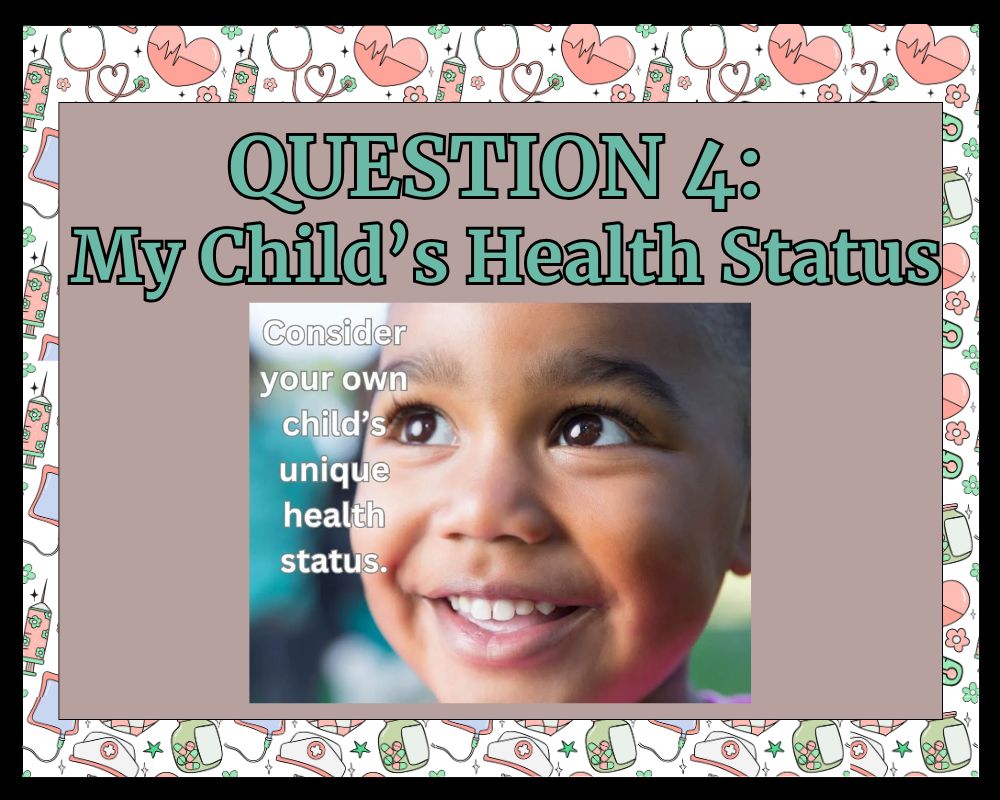
Question 5: If my child were to have a more serious case of ____ with severe symptoms, WHAT TREATMENTS ARE AVAILABLE? What is the success rates of those treatments here in America?
Bottom Line: A small portion of children that catch diseases will have complications. So, it is important to know what treatments are available in our modern world. Also, it is helpful to see the death rate BEFORE that disease’s vaccine hit the market to see how available treatments were already helping reduce the threat, even without the vaccine’s help.
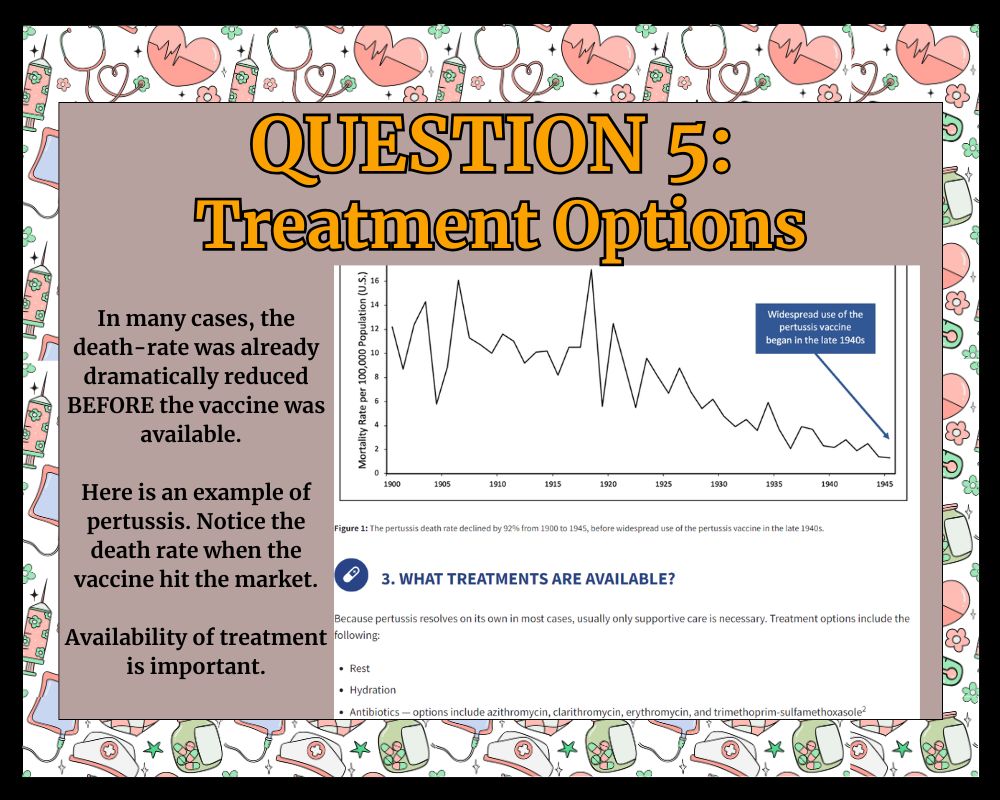
Resources to Educate Yourself:
- Physicians for Informed Consent: https://physiciansforinformedconsent.org/education/ Click on the disease you are interested in.
- Vaccine Conversation Podcast “The Disease and the Vaccine” Episode 11: Pertussis/Whooping Cough (They have similar episodes for all health conditions on the recommended vaccine schedule such as Mumps, Meningococcal, and Measles.
Question 6: Have any SERIOUS ADVERSE REACTIONS or risks been reported for this vaccine? At what rate do these serious side effects occur?
Bottom Line: Yes, there are risks associated with diseases. But there are also serious risks associated with vaccines. There are 3 reliable places to look to understand these risks. First, we can look in the vaccine manufacturer’s package insert to see what serious events occurred during trials. Second, we can look at the Vaccine Injury Compensation (VICP) numbers to see what kind of legal payouts have been given in vaccine court. Third, we can look at the CDC’s Vaccine Adverse Events Reporting System (VAERS) to see what kind of reports have been filed related to death and serious injury for each vaccine.
It is important to rememeber that we are NOT talking about injection site redness. We want the doctor to focus on SERIOUS reactions.
The phrase “one in a million” used to describe the likelihood of a severe reaction may just be a talking point. I have yet to see that statistic proven in any scientific literature.
The CDC’s Lazurus Study, conducted by Harvard Medical School and Harvard Pilgrim Research, found that less than 1% of adverse events from vaccines are reported. See the Lazurus Final Report here, and pay attention to the “Results” section on page 6. You can see Dr. Stanley Plotkin (important expert in vaccinology) verify this study under oath is sworn testimony here. That means that these VAERS and VICP numbers we are seeing are likely much higher in reality.
Resources to Educate Yourself:
1. Vaccine Manufacturer’s Package Inserts: You can click on the exact vaccine you are interested in to see its package insert. Pay extra attention to sections 5 & 6 on each insert, where adverse events are cited.
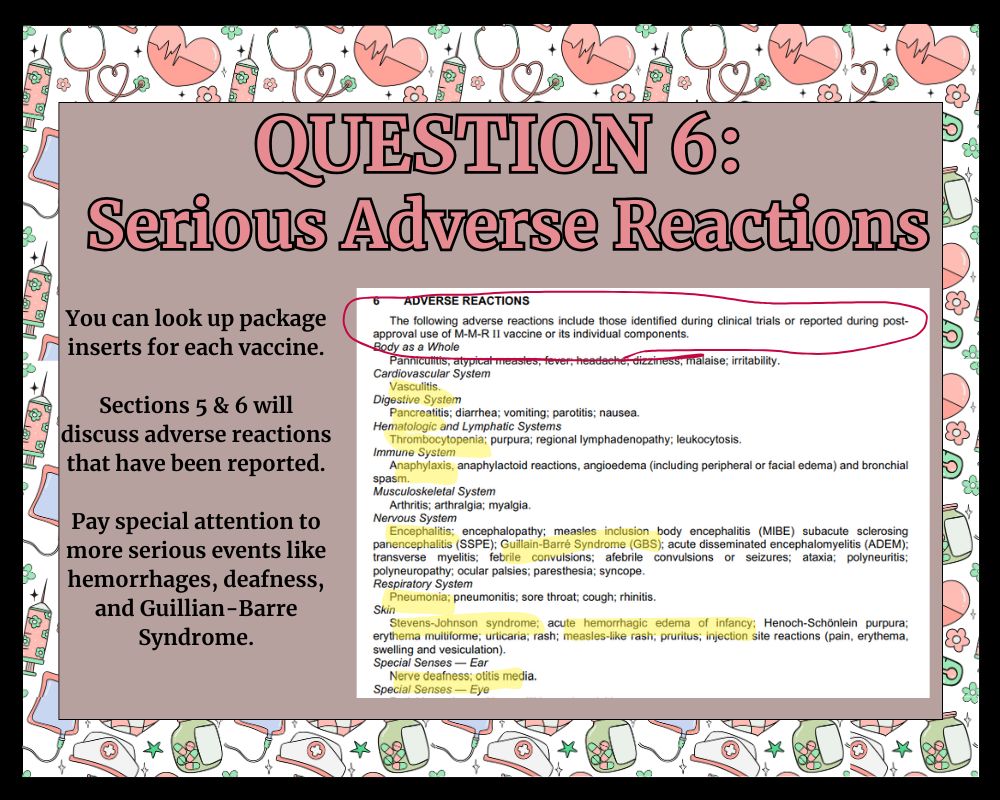
2. National Vaccine Information Center: Use the drop down menu to select the vaccine you are studying. (All of ones on the recommended vaccination schedule are there, including some of the new vaccines.) The Quick Facts section at the bottom will offer up-to-date information and statistics on serious adverse events from VAERS (Vaccine Adverse Events Reporting System) and the Federal Government’s Vaccine Injury Compensation Program (VICP). It’s the best way I’ve found to quickly check these numbers.
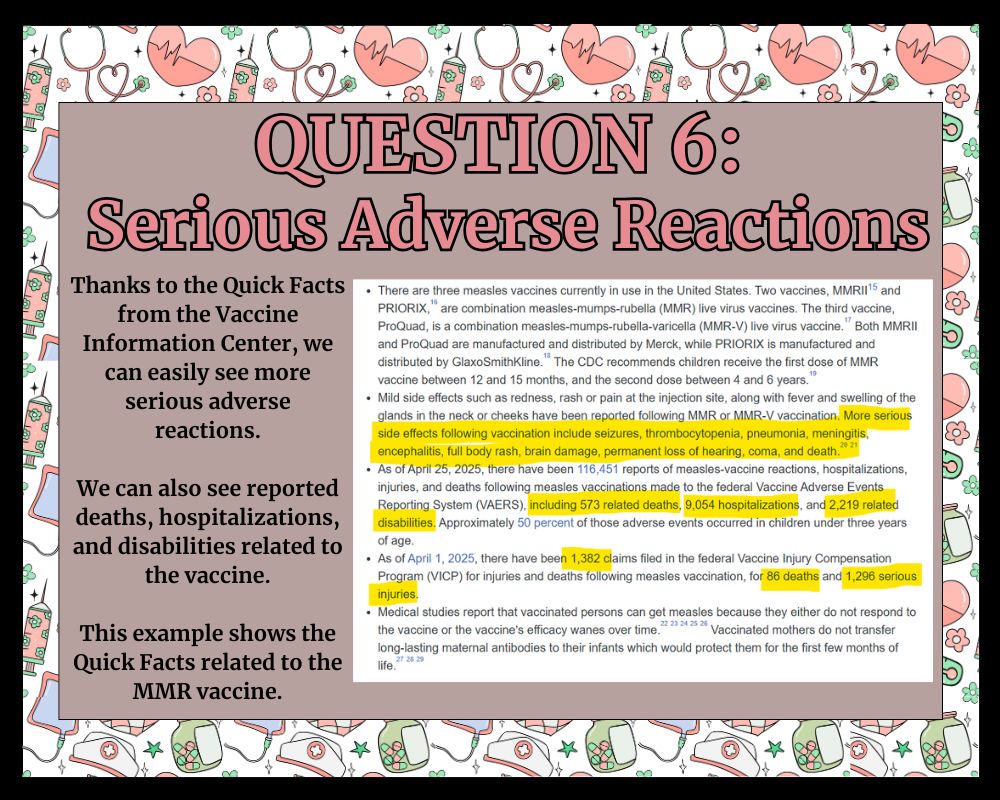
Question 7: Are there any known carcinogens, neurotoxins, or immunotoxins included in the ingredients for this vaccine?
Bottom Line: We know from the ingredients list that vaccines contain ingredients that have been proven to cause cancer (such as formaldehyde). They also contain ingredients that are classified as neurotoxins (like aluminum). However, section 13.1 on every single vaccine insert tells us that the vaccine has not been evaluated for carinogenic, mutagenic or ferility impairment potential. So, while we know these ingredients are present, no studies have confirmed their association with cancer or infertility BECAUSE THEY AREN’T LOOKING FOR THOSE THINGS IN THEIR STUDIES.
It is also important to point out that some of these safety trials conclude within days. So reactions and adverse events that happened months or years later are not tracked. In the case of the Hep B vaccine, the trial recipients were for days or months after the first dose of the vaccine.
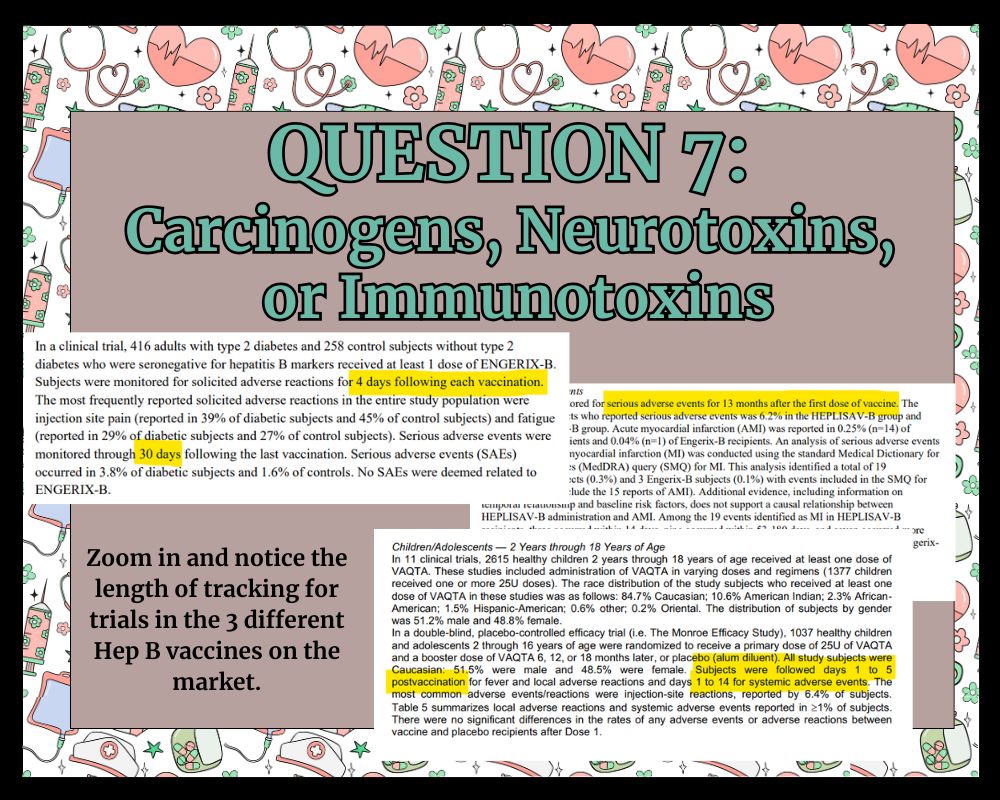
Resources to Educate Yourself:
1. Formaldehyde Information from cancer.gov See where formaldehyde is identified as a carcinogen (a.k.a. cancer-causing agent)
2. Mercury/ Thimerosal Information from Journal of Advanced Neurotoxicity See where mercury is identified as a neurotoxin in this journal article published in the National Library of Health.
3. Aluminum Information from Physicians for Informed Consent See concerns surrounding the neurotoxin aluminum. You can also scroll back up to Question 1 in this article to see more info on aluminum.
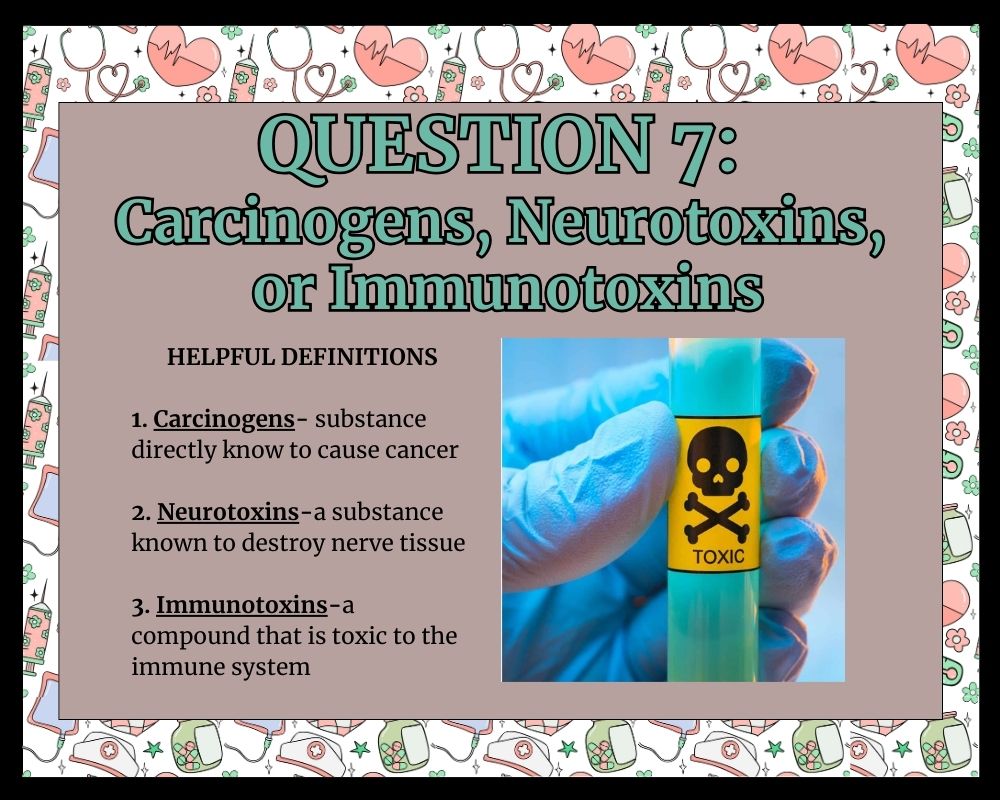
4. Vaccine Package Inserts– note section 13.1 which states that each vaccine “has not been evaluated for its carcinogenic, mutagenic, or teratogenic potential, or its potential to impair fertility”. Also note the length of time trial participants were tracked after receiving a vaccine. Is a few days or months long enough to know if there is any long-term damage from injecting carcinogens and neurotoxins?
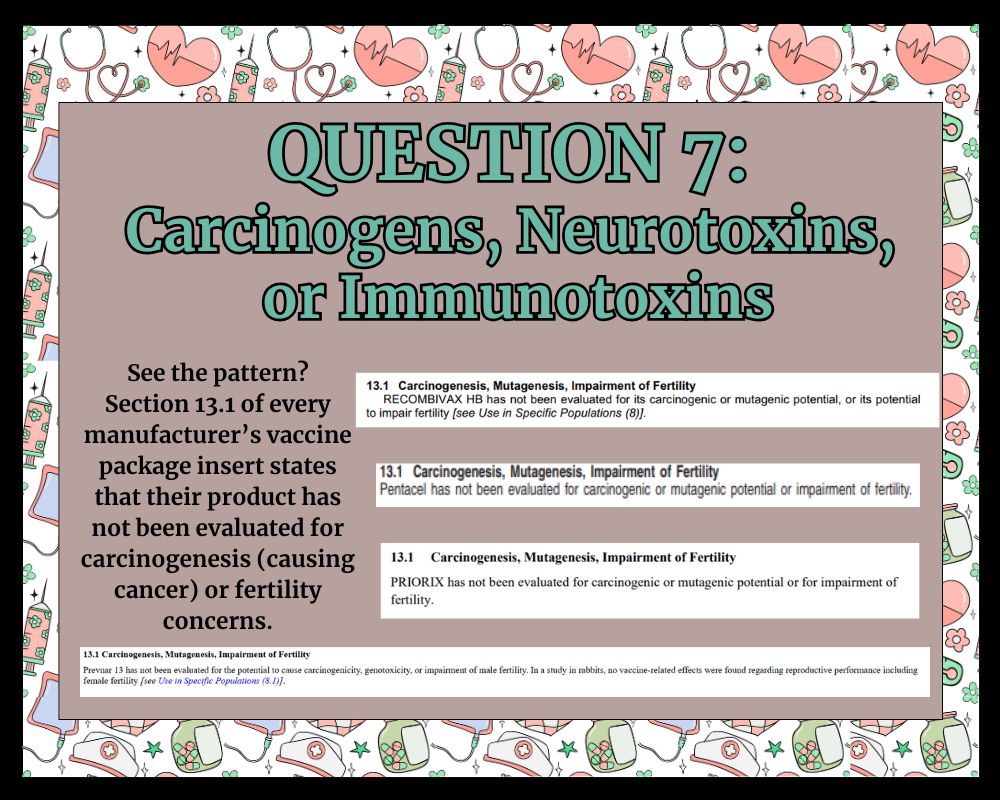
5. Vaccines and Their Ingredients – A quick list of vaccine ingredients.
Question 8: Have there been any INERT placebo-controlled trials on the _______ vaccine?
Bottom Line: Vaccine testing does not involve an inert placebo (like saline). Inert means inactive, unharmful, or neutral. Instead, they compare the new vaccine to another vaccine. If there are similar adverse events with both the new and the old vaccines, they can claim that no adverse events were observed.
Resources to Educate Yourself:
1.Weston A. Price Foundation Read more about the lack inert placebos here.
2. Read this article published in The Hill. It was released after Secretary Kennedy released a statement explaining that the Department of Health and Human Services is now requiring all new vaccines to undergo inert placebo testing.

Question 9: Has there been any scientific evidence showing that giving THIS COMBINATION of vaccines on the same day is safe?
Bottom Line: When parents take their children in for a well-visit checkup, the doctor may give 4 or more injections of 7 or more different vaccines, all in one visit. No tests have ever been done to check for the safety of the synergistic, cummulative effect of mixing and matching these different shots.
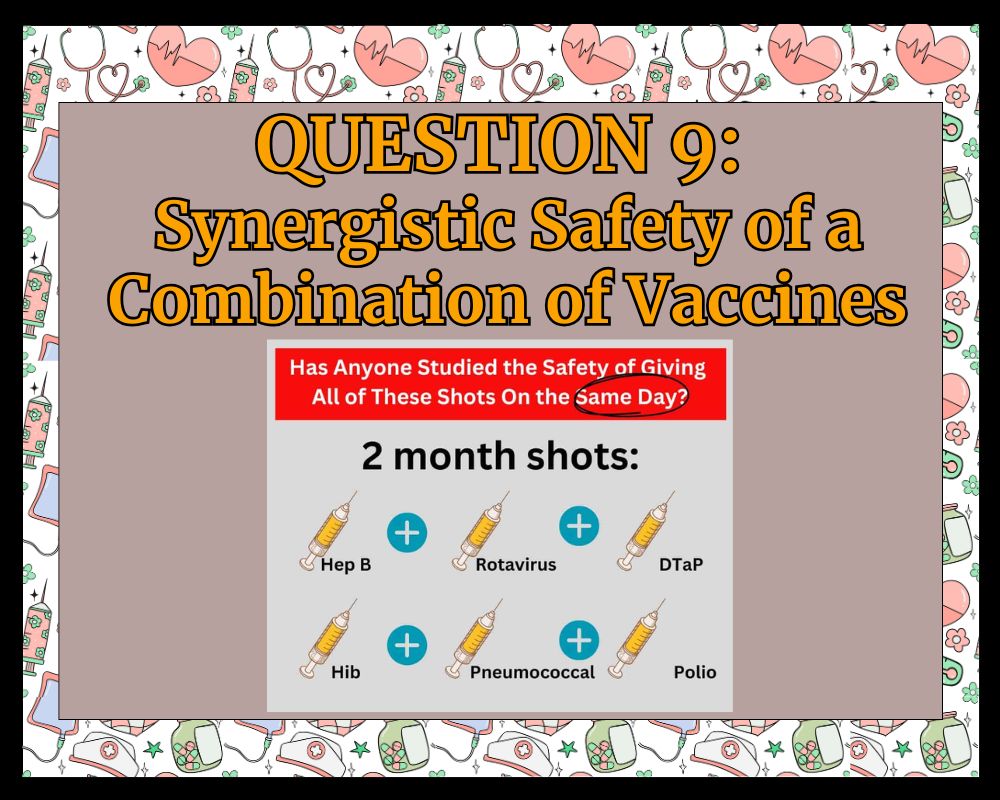
Question 10: Have there been any studies to show the safety of mixing DIFFERENT manufacturing BRANDS of vaccines is safe? Have studies shown that it’s safe to give booster shots from a different company/brand than the original shot?
Bottom Line: There have been no studies showing that mixing brands of vaccines on the same day is safe. For example, giving a child a DTaP made by Daptacel and a Hib from GSK hasn’t been tested. In addition, what if the first of DTap is one brand, the 2nd dose is a different brand, and the 3rd & 4th doses are another brand? Is it still safe? Is it as effective? Do the formulations work together? This type of mixing and matching isn’t studied.
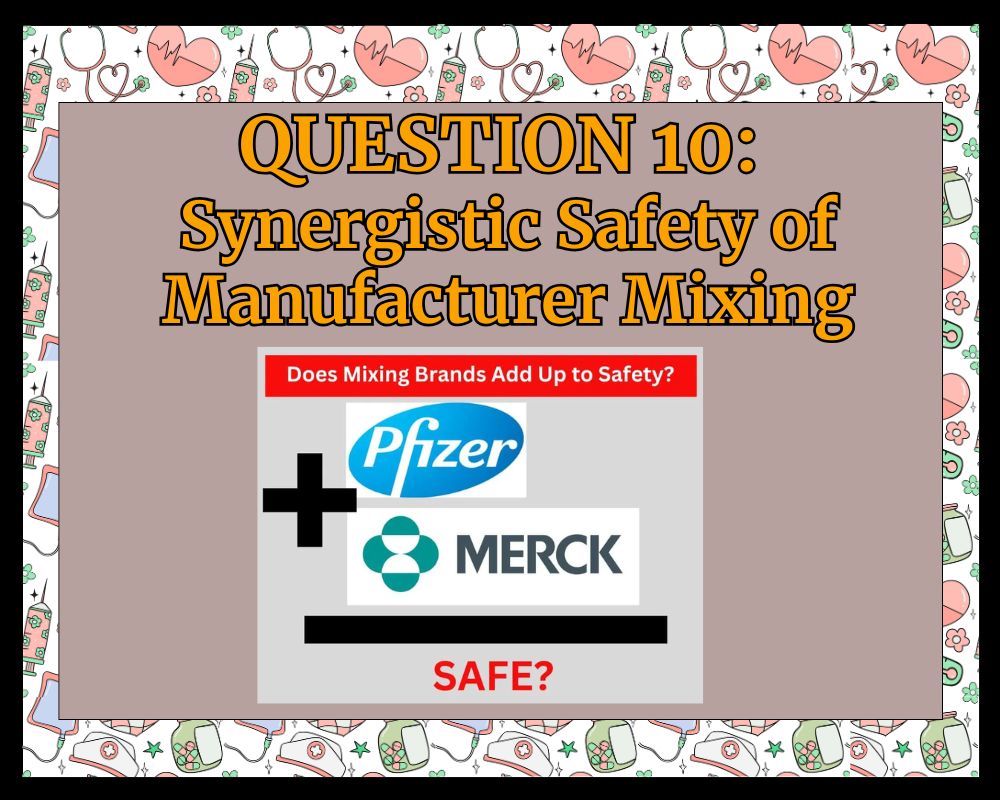
Is Anyone Asking These Kinds of Questions?
You might be feeling a little crazy for even ASKING these questions, so I want to make you aware of WHO is actually asking questions like these. The media would lead you to believe all smart, educated, responsible people unanimously agree whole-heartedly on childhood vaccines. They would also have you believe that only those too stupid to listen to the experts would go against the current recommendations. That isn’t the case, and I’ll show you how I know.
An article was published in the medical journal Pediatrics titled “Children who have received no vaccines: who are they and where do they live?” This 2004 article identified common characteristics for children who are unvaccinated. They looked at over 150,000 children all across the United States for a span of 6 years. They found that these unvaccinated children come from homes where the parents:
- Are married
- Have college degrees
- Have an annual household income that is higher than $75,000
- “Expressed concerns regarding the safety of vaccines and indicated that medical doctors have little influence over vaccination decisions for their children.” (Pediatrics, PubMed ID #: 15231927)
In addition, a 2019 article from the magazine Money, titled “Rich People Are Leading the Anti-Vaccine Movement — and Experts Have a Theory Why” came to similar conclusions. Parents that choose not to vaccinate their kids have these commonalities:
- They live in the most affluent neighborhoods.
- They are well-educated.
- They have access to exceptional medical care.
My point in showing you these common characteristics is not to claim that education or income make a difference in one’s ability to be a good parent or make good decisions. They don’t. But I want to point out that these people asking questions are STABLE. They are in stable relationships. They have stable incomes. They have degrees that likely offer them options for stable employment. They live in stable neighborhoods. They aren’t dumb, backwoods, lunatics who are off-their-rockers like we might be led to believe.
In fact, this stability has likely given them the confidence to think for themselves. They don’t need the approval of the masses. In fact, there’s a good chance that in their chosen career paths, they are LEADING the masses (lawyers, CEOs, financial planners, and other professional positions with high income levels). In short, if you’ve got questions, you’re in good company.

In the article from Money magazine, they interviewed Linda Fentiman, a Pace law professor who specializes in health law and vaccine exemptions. Her assessment of these parents is below:
“Parents who opt out of vaccines tend to ‘believe, simply, that they can make the scientific determinations about the efficacy and dangers of vaccines for themselves,’ she says.
They have more free time on their hands than lower income parents — time that can be spent poring over anti-vaccine forums and websites, and applying for state-specific exemptions required to bypass school immunization laws. And they believe what they’re reading […]”.
Well, Linda, you’re right. I DO believe that I can make these determinations myself after reading up on them and asking good questions. But it’s not because I have too much free time on my hands. It’s because THESE ARE MY CHILDREN. I love them, and I’m called to steward them well.
Final Thoughts on the Questions for Your Doctor
I hope you realize that there is much homework to be done before walking into your doctor’s office and blindly trusting the recommended schedule as it will be presented to you. Yes, infectious diseases can be serious. And deadly diseases should be understood and the risks thoroughly considered. But severe adverse events from vaccine and severe allergic reactions must also be considered. And in the end, you may find that the higher risk is not where you expected it to be!
Don’t be surprised if your child’s health care provider isn’t prepared to answer this list of questions. Most of them are not common questions that they deal with every day. In fact, most parents don’t ask any questions at all. Childhood vaccinations must be carefully considered, so if you can’t get sufficient answers to your questions on the first visit, ask to continue the conversation at the next appointment. Or you may need to find another provider that is more knowledgeable about immunization practices.
If your child’s day care or school requires proof of vaccination by a certain date, you can always seek an religious/philosophical exemption from your local health departments while you gather the information needed to make a wise decision.
In my very unprofessional opinion, the best protection you can give your young children is your own research and your own wisdom for their particular situations. Carefully and prayerfully gather your information, assess the greater risk for serious illnesses and their corresponding vaccines, and move forward knowing you’ve done your best.
Want to take a deep dive into reading about vaccines? I’ll show you some of the best resources out there. Don’t miss my article on the Top Ten Resources for a Mom with Questions about Vaccines!
Looking for more natural health and remedy ideas? Visit my Remedy with Diligence page!

